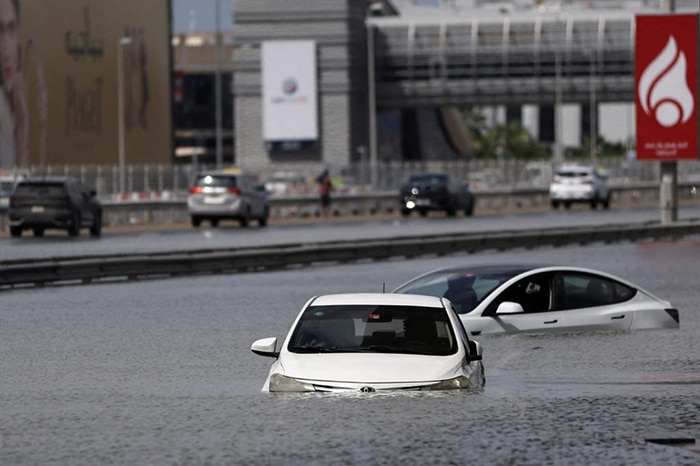Dubai heavy floods yesterday the 17th of April, is sparking discussions about climate change and cloud seeding. Even neighboring Oman faced substantial rainfall, resulting in casualties.
Let’s delve into the details of this remarkable rainfall event and its implications regarding climate change and cloud seeding:
Unusual Rainfall Patterns
Dubai, typically characterized by arid conditions, received over 256mm of rain within 24 hours in Al-Ain, located nearby. This extraordinary precipitation was caused by a “cut off” low-pressure system, which trapped warm, moist air, leading to intense rainfall.
Climate Change’s Role
While the precise impact of climate change is still under scrutiny, experts note that warmer air has the capacity to hold more moisture, contributing to increased rainfall intensity. This aligns with projections suggesting a potential 30% rise in annual rainfall in the UAE by the century’s end due to global warming.
Debunking Cloud Seeding Claims
There were assertions linking the floods to recent cloud seeding operations, but experts emphasize that cloud seeding plays a limited role during significant weather events. The National Center of Meteorology (NCM) conducts cloud seeding in the UAE, but it is not the primary driver of such extreme weather phenomena.
![A view shows the city during a rain storm in Dubai, United Arab Emirates [Rula Rouhana-Reuters]](https://satofsat.com/wp-content/uploads/2024/04/A-view-shows-the-city-during-a-rain-storm-in-Dubai-United-Arab-Emirates-Rula-Rouhana-Reuters.jpg)
UAE’s Response to Flooding
The floods exposed vulnerabilities in Dubai’s infrastructure, particularly in drainage systems. Discussions are underway regarding the construction of additional reservoirs and upgrades to drainage facilities to better manage future heavy rainfall events.
Insights from Experts
Prof. Maarten Ambaum from the University of Reading highlights, “This rare rainfall event underscores the evolving climate patterns in the Gulf region.”
Dr. Friederike Otto from Imperial College London warns, “Continued climate change could lead to heightened rainfall intensity and increased flood risks.”
Conclusion
This flooding event serves as a reminder of the importance of climate-resilient infrastructure and proactive measures to address the impacts of extreme weather events in regions susceptible to such occurrences, like the UAE.

